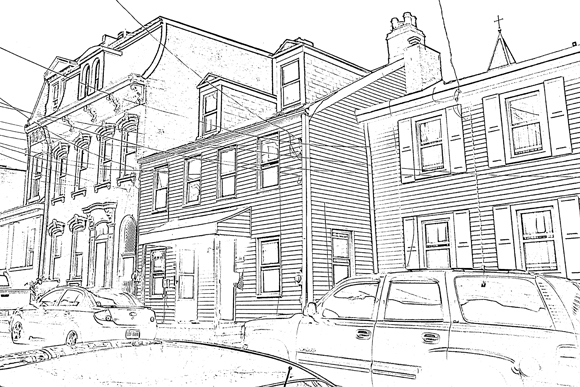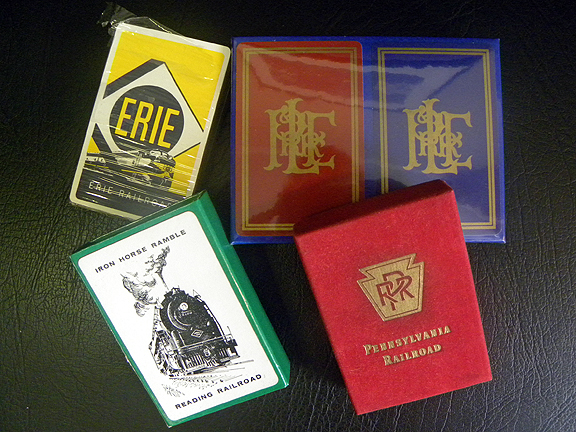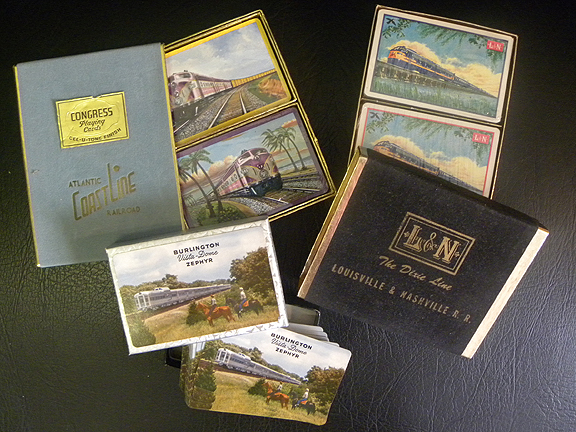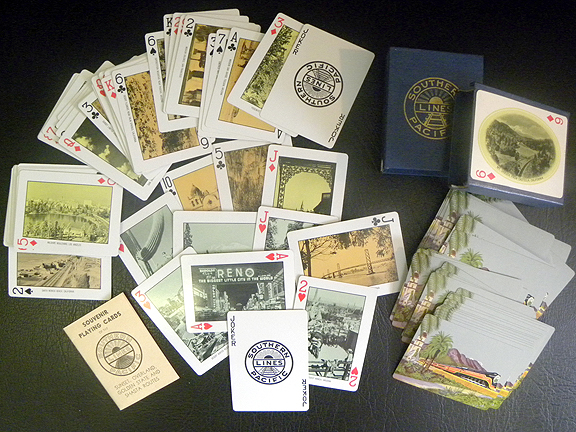
Author Archives: ryochum
-
E Properties & Development Restore Abandoned Lawrenceville Houses
Wednesday, September 01, 2010
E Properties and Development is nearing completion on the transformation of two blighted properties on 38th Street in Lawrenceville, contributing to the major revitalization efforts taking place on the hill between Butler Street and Penn Avenue.
The two connected townhouses at 234 38th Street sat neglected for some time, until E Properties and Development principal Emeka Onwugbenu purchased them last June.
“In terms of challenges, people suggested that the properties be demolished,” says Onwugbenu. “Our team of architects and engineers created value-based solutions that would restore the structural stability of each building while building on its architecture.”
Onwugbenu and architect Andrew Moss extended the foundations of the houses to create a more open environment with two added rooms, and installed bamboo floors throughout the buildings. They are also raising the second and third floors, and installing clear story windows, which will allow light to pour through the master bedrooms that will open into unique balcony decks overlooking downtown. The exterior, which is currently composed of vinyl siding, will be swapped out for cement board side material. Coldwell Banker has signed on to market the homes, which will start in the low $200,000 range, and are slated for move-in by Thanksgiving.
Onwugbenu, originally from Nigeria, attended Penn State for industrial engineering, and is currently in his final semester of the MBA program at CMU. He started E Properties and Development in 2007, in order to create unique value-added properties, which mix traditional design with a modern feel.
In addition to the homes at 234 38th Street, architect Andrew Moss is currently building his dream home one block away at 221 38th Street. Two other homes, at 236 and 238 38th Street, are currently being renovated by private owners, within steps of the 234 buildings.
Sign up to receive Pop City each week.
Source: Emeka Onwugbenu, principal of E Properties and Development
Writer: John FarleyImage courtesy Emeka Onwugbenu
-
Fairbanks Feature: Playing Cards from Well Known Rail Lines
James D. Van Trump Library | Frank B. Fairbanks Transportation Archive | Fairbanks Features
 Showcasing a variety of materials located in the Frank B. Fairbanks Rail Transportation Archive
Showcasing a variety of materials located in the Frank B. Fairbanks Rail Transportation ArchiveNo. 7 Presentation
Fairbanks Feature: Playing Cards from Well Known Rail Lines
In the golden days of railroad travel, amenities abounded for the rider, especially on the long distance excursions. Railroads provided decks of cards to passengers, many times given out free. These cards were good advertisements for the sights that could be seen along the way. They also showed pictures of the rail cars and engines of that particular rail line and/or reminders of the great historical background of a railroad. Many of these cards came in durable boxes; some are covered in velvet-like material. These cards were not produced to be discarded at the end of the journey. There is a high quality, good, long-lasting feel to the cards.
Frank Fairbanks collected these cards as he traveled the United States. The Fairbanks Archive has playing cards from 46 different rail lines, given out on train trips between 1952 through 1965. Some of the decks still have their seals intact, and some have been opened but the cards have never been used. All the boxes of playing cards are on display in the Archive, and patrons can handle and examine each box.
- “Pennsylvania Collection” Four rail lines represented: Reading, Lake Erie, Pennsylvania, and Erie Railroad
- Great Northern Railway and The Santa Fe
- Wabash and the Chicago and North Western Railway Company
- Louisville & Nashville R.R., Burlington Vista-Dome Zephyr, and The Atlantic Coast Line
- Two very interesting decks come from the Southern Pacific Lines. Each deck is different. One side of the card has a lovely color photo of the train itself. The other side has a photo of a sight along the route. With 52 cards plus extra cards in each deck, there are over 100 different well known photos along these routes in the time period of the 1950s to 1960s.
The Frank B. Fairbanks Rail Transportation Archive is open by appointment on Mondays, from 10:00 a.m. to 5:00 p.m. Use of the archive is free to PHLF members (one of the benefits!); non-members are assessed a $10 use fee.
The Archive is located on the fourth floor of The Landmarks Building at Station Square, in the offices of the Pittsburgh History & Landmarks Foundation.
To schedule an appointment, email Librarian James Halttunen: James@phlf.org
-
2nd Annual Historic Bridge Weekend August 20-22
PHLF News
August 12, 2010PHLF members and friends are invited to attend any of the dinners/lectures and tours that are part of the 2nd Annual Historic Bridge Weekend (August 20-22), involving engineers, historians, photographers, and preservationists from throughout the nation and Germany.
Dinner on Friday, August 20 (6:00 to 10:00 pm) will be at the Rock Bottom Restaurant & Brewery in Homestead, PA. For reservations ($35 per person), contact Mary Lu Denny (412-471-5808, ext. 527). Please RSVP by Tuesday, August 17th. Speakers include the former head engineer of Allegheny County and the Pennsylvania Turnpike, the creator of www.historicbridges.org, and a construction project manager. The dinner will include presentations and discussions about historic bridge preservation solutions, historic bridge rehabilitation projects, and historic bridge monitoring using high-tech sensors.
For details on the Saturday, August 21st tour and dinner and Sunday, August 22nd tour, visit http://www.historicbridges.org/weekend.htm. During the Saturday evening dinner, speakers will discuss experiences in creating Pennsylvania’s first historic bridge park and European and American perceptions of historic preservation.
Todd Wilson, former PHLF scholarship recipient and PHLF member, is the event coordinator.
-
Thank You Summer Interns
PHLF News
July 29, 2011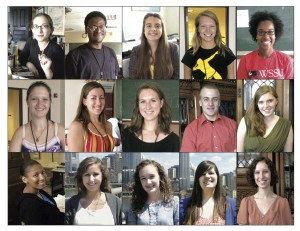
Since March, PHLF has involved 15 students (high school, college, and graduates) in its educational programs and preservation activities. As volunteers with PHLF, each student decides how many hours a week and what days h e/she is able to help out. Once here, interns assist with school tours, workshops for teachers, research and archival assignments, and main street programs. And, if they enjoy being with students, they help out with CampDEC, a 2 0-day adventure with middle school students in the Pittsburgh Public School’s Summer Dreamers Academy. Thank you everyone for your help and effort!
As a result of their experiences, interns add to their portfolios and gain a new (or deeper) appreciation for Pittsburgh’s architecture and history and for the economic, social, and cultural benefits of historic preservation. Intern comments on the value of their experiences include the following:
- Julie Edwards: “PHLF has given me a deeper understanding of Pittsburgh’s extensive architectural heritage and a greater appreciation for the built environment.”
- Alyssa Malobicky: “Thank you for welcoming me back to PHLF again. The hands-on involvement in the day-to-day activities of PHLF teaches me so much. I appreciate all that PHLF does to keep Pittsburgh a special place.”
- Ashley Moore: “Through interning with PHLF, I have a new-found appreciation for Pittsburgh. It is amazing how evidence of the city’s changes was here long before I was and may be here long after I am gone.”
- Barrett Reiter: “My experiences with the educational, non-profit portion of PHLF have taught me that educating future generations is as important as preserving the accomplishments of those past. Without understanding and a personal connection to the built environment our unique history is too easily lost.”
- Shane Martin: “My time with PHLF has broadened my horizons on subjects ranging from historic preservation to urban design and the strenuous human effort put into the systems that hold our society together. I was fortunate to work alongside the very minds that ensure our city’s rich history and put forth my own efforts at planning the future.”
We thank the following 15 people (all pictured above) who volunteered their time and talent to PHLF:
- Lauren Borrelli, Penn State University (Architecture)
- Emily Bush, Miami University of Ohio (History/Journalism)
- Julie Edwards, Kent State University graduate (Interior Design)
- Michal Gould, University of Pittsburgh
- Stacy Litwinowicz, West Virginia University (Interior Design)
- Samantha Mabe, Clemson University (Architecture)
- Alyssa Malobicky, Virginia Tech (Landscape Architecture)
- Shane Martin, University of Pittsburgh (Urban Studies/Architectural Studies)
- Grace Meloy, University of Pittsburgh (Architectural Studies/Civil Engineering)
10. Ashley Moore, University of North Carolina graduate (Masters of Urban Design)
11. Barrett Reiter, University of Pittsburgh ( History/Political Science/Historic Preservation)
12. Katherine Schmotzer, Baldwin High School
13. Emily VanBuren, Slippery Rock University––Masters (History)
14. Camden Yandel, Saint Vincent College (Graphic Design)
15. Sydney Zalewski, Carnegie Mellon University (Architecture/Photography)
To learn more about PHLF’s volunteer internship program click here.
-
Challenge Grant Generates $100,000 for Historic Religious Properties Program
PHLF News
Wednesday, August 04, 2010Thanks to $25,000 in challenge grants from two anonymous donors, The Pittsburgh History and Landmarks Foundation is reviving its recently troubled Historic Religious Properties Program, which provides matching grants to help congregations perform exterior maintenance on their facilities.
“Since 1997, we’ve been giving an average of 70 to 80 thousand dollars a year in grants. When we hit economic hard times in 2010, we suspended the grant program, because there just wasn’t enough money,” says Carole Malakoff, coordinator for the religious properties program.
With the grant program in limbo, two donors stepped up three weeks ago, giving the foundation 60 days to match the grants. The foundation’s President put up $12,500, and over 288 donors contributed gifts totaling $62,710, bringing the total grant package available for the 2011 grant cycle to over $100,210, making this the most successful annual appeal in the Pittsburgh History and Landmark Foundation’s 46 year history.
Applications for grants will be due by December 1, 2010, and provide matching grants up to $10,000 to Allegheny County churches that are over 50 years old.
“Over the years, the majority of our grants have gone to stained glass window work, roof and gutter repair, and masonry work,” says Malakoff.
As a result of the generous outpouring of support, PHLF has decided to host a technical assistance workshop on September 20 at the Calvary Episcopal Church in Shadyside. Experts will provide demonstrations to members of congregations on green building, handicap accessibility, and all that it entails to maintain a historic building.
“We sent out a letter in June to see if there was enough interest, and we’ve had 30 congregations call to say they are interested. So, we’ve had a wonderful response, and we’re still accepting people to come,” says Malakoff.
The workshops go from 10:30 a.m. to two p.m. Interested parties can contact Carole Malakoff at 412-321-3612.
Sign up to receive Pop City each week.
Source: Carole Malakoff, coordinator for PHLF Religious Properties Program
Writer: John Farley -
Historic Religious Properties Technical Assistance Workshop
August 1, 2010
PHLF NewsThanks to a successful Challenge Grant Initiative, the Pittsburgh History & Landmarks Foundation will be offering its Historic Religious Properties Grant Program again this Fall 2010.
We are offering a technical assistance workshop for congregation leaders, representatives, and guardians of historic religious structures on September 20 at Calvary Episcopal Church in Shadyside.
What Will the One-Day Workshop Be About?
You and others from your congregation will be able to attend seminars and speak with experts in the fields of historic preservation, building project planning and financing, and building construction and maintenance.
Seminar topics will include the following :
- Preserving historic religious properties;
- Prioritizing building needs and projects;
- Planning and organizing building projects;
- Financing a project and identifying grant and loan sources;
- Identifying and working with contractors, obtaining bids and estimates, and contracting the work;
- Repairing, restoring, and maintaining stained glass windows, masonry, roofs and gutters, domes, steeples, and steps; and
- Making your historic religious properties more energy efficient.
All of the topics that will be discussed will help you in planning and preparing your next PHLF Grant Application.
Historic Religious Properties Technical Assistance Workshop
- Date: September 20, 2010
- Time: 8:30 a.m. to 2:00 p.m.
- Location: Calvary Episcopal Church, 315 Shady Avenue, Pittsburgh, PA
- Fee: $50.00, payable to PHLF.
Fee covers up to 3 attendees from your congregation, including box lunches.
(Please mail your check by September 15 to Carole Malakoff, PHLF, 100 W. Station Square Drive, Suite 450, Pittsburgh, PA 15219)For reservations contact: hrp@phlf.org or Carole Malakoff: 412-471-5808 or 412-321-3612.
Attendance is limited.
-
Roxian (Theater) Ready for Start of Renovation
Thursday, July 29, 2010By Brian David, Pittsburgh Post-GazetteWhen Andrew Hieber saw a “for sale” sign on the Roxian Theater in McKees Rocks, he had an instant vision.
A musician, he knew the local concert scene. A longtime restaurant worker, he knew entertainment. As the owner of a martial arts and fitness gym, he knew business. As a native of The Rocks, he knew what lower Chartiers Avenue had once been. And as a lucky early investor in America Online stock, he even had a bit of money.
“I had always looked at the Roxian as a great music venue,” with nice acoustics and a size that slotted neatly between the clubs and the stadiums, he said. Built in the late 1920s as a movie theater and used for every conceivable stage show since, the Roxian was well-worn but structurally sound. Mr. Hieber figured he could slap on some paint, work his connections and start bringing in mid-level touring bands.
That was 2004. The vision has taken a couple of beatings since. “I don’t get excited anymore,” Mr. Hieber said. “I got really excited five years, six years ago, and it just got me frustrated.”
But if he starts feeling the rush again, it is excusable — the grand old theater is in the process of being gutted in the first phase of a renovation that should have it open by next year.
The plan is to open a side wall to create space for ticket booths and a new entrance, refurbish the main floor with a new bar area and removable seats, raise the stage for safety and better sightlines and replace the 285 balcony seats with 225 seats sized for modern rear ends. The building is also getting an elevator, new wiring, plumbing and ventilation systems, new bathrooms and new light and sound systems.
In all, the cavernous space — five floors on a 27,000-square-foot footprint — will be able to hold 1,500 for a concert, but also will be able to function café-style for banquets, receptions and smaller shows.
In some ways, all this is possible because of the first beating that was administered to Mr. Hieber’s dream six years ago.
When he inquired about buying the building, he was put in touch with an old Sto-Rox schoolmate, Taris Vrcek, who had recently taken on leadership of the McKees Rocks Community Development Corp. Mr. Vrcek told him the Community Development Corp. was acquiring the building and already had someone lined up to be owner/operator of the theater business.
But he promised to keep Mr. Hieber atop the list if anything happened, and when the original operator bailed out six months later, he gave Mr. Hieber a call.
The next blow came when Mr. Vrcek said the community corporation would rent him the building, but would not sell it.
“I said, ‘Why should I rent it from you when I can own it myself?’ ” Mr. Hieber said. “But he waved the carrot of nonprofit grant money in front of my nose.” The Community Development Corp. could get the kind of support that no for-profit business could.
The final blow made the necessity of that arrangement clear; architectural studies showed that to meet code, the theater would need an elevator and bathrooms with 42 toilets, far beyond what it had. “That kind of tore down my dream,” Mr. Hieber said.
Mr. Vrcek, however, was undeterred. He had a strong vision of what lower Chartiers could be, and the redeveloped Roxian was “the game-changer, the catalyst for the rest of the strategic plan,” he said.
“Bring 1,000 people in here several times a week, imagine what that would do. It would really give us a chance to market some beautiful old buildings.”
The neighborhood already has Hollowood Music Center, a music store with a regional clientele, and the Roxian is catty-corner from the Father Ryan Arts Center, a nonprofit facility that supports visual and performing arts.
Mr. Vrcek sees other clubs and restaurants sprouting, capitalizing on the arts-centered theme. “The Roxian could really make this a destination of choice,” he said.
Mr. Vrcek spent years obtaining a $500,000 grant from the state Department of Community and Economic Development and a $250,000 county grant. He also brought in Dennis Stasa, owner of the McKees Rocks company Penn Interiors, as a private partner. The company is doing the renovation work and will have an ownership stake.
Mr. Hieber described Mr. Stasa as “a visionary” when it comes to the building’s interior. “He’s sure when he’s done with this that he’s going to end up on the cover of Pittsburgh Builder magazine.”
The full flow of Mr. Stasa’s vision may have to wait a while, though. Mr. Vrcek said the focus for now is on getting the building ready for effective use as a concert venue, with the “extra bells and whistles” to follow as money is available.
That puts the current focus on the building’s mechanicals and on bringing the main floor and main stage up to standards.
The “bells and whistles” could be a lot of fun, though, because the building is a maze of half-hidden rooms, like a real-life “The Phantom of the Opera” set.
There are rooms flanking the stage along the back wall, stacking up to the ceiling. These were delicately referred to as “sleeping rooms” in the theater’s club days and could be used as “green room” space for artists.
Mr. Hieber envisions opening a small restaurant in a room above what is now the entrance and a cigar bar in an identical room above that. There’s a lounge between the two entrances that was, until recently, adorned with hanging beads and disco posters. The projection room still holds the original projectors — huge machines from the dawn of the movie era.
And then there’s the basement, a huge space previously used as a sports and dance bar; Mr. Hieber envisions a similar use in the future.
“I’ve been through the building probably 20 times,” Mr. Hieber said, “and every time I find a new space I didn’t know about.”
And standing in the empty, dusty darkness of the main floor, he betrayed the fact that the excitement really is still there.
“It’s going to be awesome,” he said.
-
New Hope for Jeannette Glass Co. Plant Site
Thursday, July 29, 2010By Candy Woodall – Pittsburgh Post-GazetteRobert Carter drives past it every day. He sees the blemish on the city landscape and questions the fate of the old Jeannette Glass plant.
A city firefighter for the past 36 years and the mayor for the past six months, Mr. Carter is quite familiar with Jeannette Glass Co.
“I remember when it was booming,” he said.
He remembers when the plant got so busy churning out coffee cups and bowls that the fire department had to go there to cool the tanks.
He remembers when it closed in 1983.
And he remembers getting a call to put out flames when a fire ravaged the plant for 22 hours in the mid-1980s.
Even though he still wears a fire helmet, it’s the hat he wears as mayor that is causing him to put out flames of a different kind these days.
In a 3-2 vote, city council last week approved a trip to New York City, during which Mr. Carter and solicitor Scott Avolio will try to calm a decades-long dispute between Abraham Zion and officials throughout Westmoreland County.
Mr. Zion bought the Jeannette glass plant for $4 million in 1983. Since then, local leaders have engaged with him in a number of fits and starts, hoping to do something with the old facility that is now falling apart. It has been exposed to the elements and is “a total eyesore,” according to the mayor.
John Skiavo, president of nonprofit Economic Growth Connection of Westmoreland County, said officials got close a few times, but talks ultimately went nowhere. He last communicated with Mr. Zion in 2007, he said.
“We had meetings for five years straight, but in the end, [Mr. Zion] was never agreeable,” he said.
Mr. Zion, 85, was not available for comment. An assistant in his New York office said he has a medical condition and doctors appointments.
That medical condition is why Mr. Carter is traveling to him.
The mayor said Mr. Zion first reached out to him six months ago with a phone call to congratulate him on his election.
“Out of nowhere, I got a call. It knocked me off my heels a little. He definitely caught my attention,” Mr. Carter said.
Mr. Zion told him he wanted to do something with the property, and Mr. Carter saw it as a breakthrough.
“It’s been a long time coming, and I don’t want to miss the opportunity to get that property cleaned up,” he said.
No specific plans are in place for their visit, but Mr. Carter said he hopes to go “within the next month, as soon as possible.”
The property sits in the heart of the city like a monument, with rusted remnants reminding passers-by what Jeannette was in its heyday. It sits on about 32 acres on two parcels between Chambers and Bullitt avenues facing Sixth Street, with an appearance starkly different from the development going up around it.
As part of a $31 million effort to revamp the city, 25 single-family homes and a nine-unit townhouse complex have been built along South Sixth Street.
“There’s a major project in front of [the glass plant],” Mr. Carter said. “When people look out their back doors, they see an old, rundown industrial yard. And I don’t want people to think this is some old, rundown community.”
Getting the property cleaned up is his first priority.
“I’m not going to New York with stars in my eyes. I’m going on a mission,” he said.
The mayor and Councilman Jeff DePalma, who voted in favor of the trip, noted that Mr. Zion has been a good taxpayer, doling out $68,000 a year in property taxes — more than $1 million in the past 20-plus years — and can only hope he will be as diligent with the actual property.
“I honestly can’t read his mind. [Mr. Zion] has just never seemed totally determined to do anything with the property,” said Mr. Skiavo, of Economic Growth Connection. “That property is a real nuisance for the city and can become a real detriment as it further deteriorates.”
Three years ago, Mr. Skiavo and colleagues, through their redevelopment organizations, offered to buy the property for about $500,000 and clean it up, which would have cost “hundreds of thousands of dollars,” he said. Mr. Zion would have been relieved of all liability and able to sell the scraps.
“He entertained the possibility, but turned us down,” Mr. Skiavo said.
In 2007, Mr. Skiavo wrote a report to city council, saying the only avenue left was to force Mr. Zion to clean up the property through enforced ordinances and codes.
The history of failed business relations with Mr. Zion is why councilmen Mike Clark and Ron Dinsmore voted against the trip to New York.
Mr. Carter said he’s aware of the history, but has to try.
“I have a lot of naysayers, but I can’t live in the past. I can’t change yesterday.
“That property has just sat there for years and years and years. This is an opportunity to change that.”
Mr. Skiavo said the property could probably house a commercial or light manufacturing facility.
Mr. Carter drives past the dilapidated plant and envisions green space, a park setting, small specialty shops, something to promote the city rather than put a damper on it.
“One way or another, when that meeting is over, I will have a defined answer about what is going on with that property,” he said.

